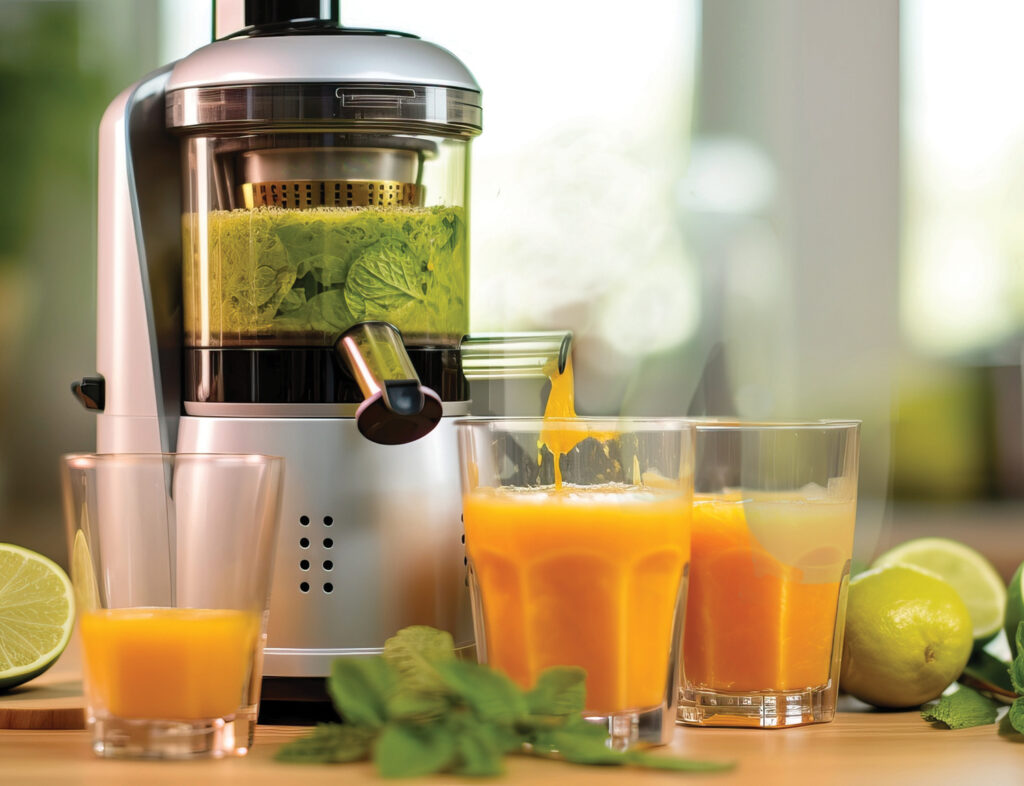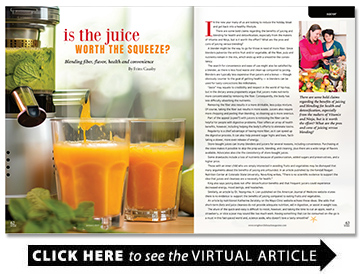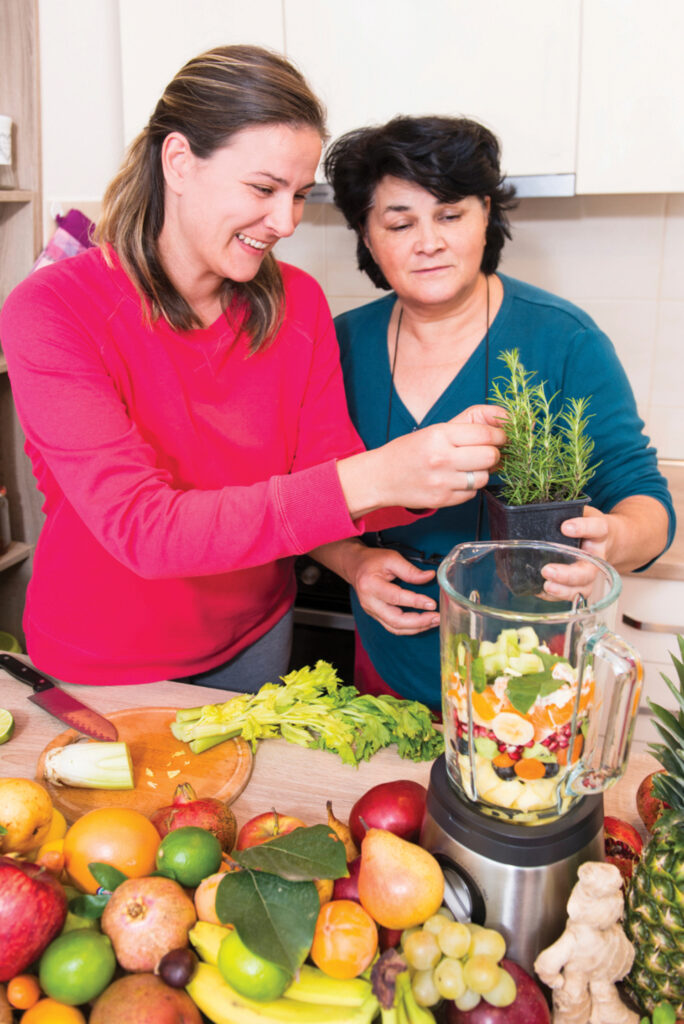Is the Juice Worth the Squeeze?
Blending fiber, flavor, health and convenience
BY Fritts Causby

In the new year many of us are looking to reduce the holiday bloat and get back into a healthy lifestyle.
There are some bold claims regarding the benefits of juicing and blending for health and detoxification, especially from the makers of Vitamix and Ninja, but is it worth the effort? What are the pros and cons of juicing versus blending?
A blender might be the way to go for those in need of more fiber. Since blenders pulverize the entire fruit and/or vegetable, all the fiber, pulp and nutrients remain in the mix, which ends up with a smoothie-like consistency.
The search for convenience and ease of use might also be satisfied by a blender, as there is less food waste and clean-up compared to juicing. Blenders are typically less expensive than juicers and a bonus — though obviously counter to the goal of getting healthy — is blenders can be used for tasty concoctions like milkshakes.
“Juice” may equate to credibility and respect in the world of hip-hop, but in the dietary arena proponents argue that juicers make nutrients more concentrated by removing the fiber. Consequently, the body has less difficulty absorbing the nutrients.
Removing the fiber also results in a more drinkable, less pulpy mixture. Of course, taking the fiber out results in more waste. Juicers also require more chopping and peeling than blending, so cleaning up is more onerous.
Part of the appeal (a peel?) with juicers is removing the fiber can be helpful for people with digestive problems. Fiber offers an array of health benefits, however, including helping the body’s efforts to eliminate toxins.
There are some bold claims regarding the benefits of juicing and blending for health and detoxification, especially from the makers of Vitamix and Ninja, but is it worth the effort? What are the pros and cons of juicing versus blending?
Regularity is a chief advantage of having more fiber, as it can speed up the digestive process. It can also help prevent sugar highs and lows, facilitating a slower, more even release of energy.
Store-bought juices can trump blenders and juicers for several reasons, including convenience. Purchasing at the store makes it possible to skip the prep work, blending, and cleaning, plus there are a wide range of flavors available. Advocates also cite the consistency of store-bought juices.
Some drawbacks include a loss of nutrients because of pasteurization, added sugars and preservatives, and a higher price.
Those with an inner child who are simply interested in avoiding fruits and vegetables may be dismayed that many arguments about the benefits of juicing are unfounded. In an article published by the Kendall Reagan Nutrition Center at Colorado State University, Nova King writes, “There is no scientific evidence to support the idea that juices and cleanses are a necessity for health.”
King also says juicing does not offer detoxification benefits and that frequent juicers could experience decreased energy, mood swings, and headaches.
Similarly, an article by Dr. Yeong-Hau H. Lien published on the American Journal of Medicine website states there is no evidence to support the benefits of juicing compared to eating fruits and vegetables.
An article by nutritionist Katherine Zeratsky on the Mayo Clinic website echoes these ideas. She adds that short-term diets and juice cleanses do not provide adequate nutrition, aid in digestion, or assist in weight loss.
The allure of the quick-and-easy is difficult to resist, however, and taking the time to cut an apple, wash a strawberry, or slice a pear may sound like too much work. Having something that can be consumed on-the-go is a must in this fast-paced world and, science aside, who doesn’t love a tasty smoothie?

